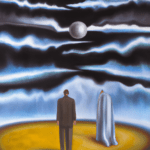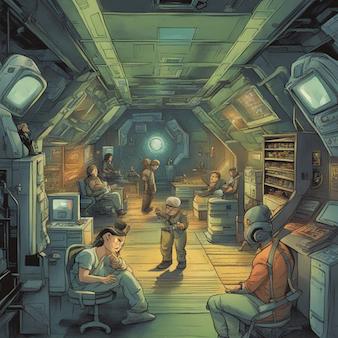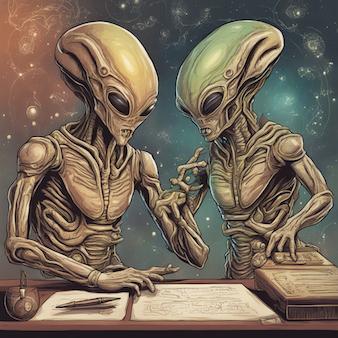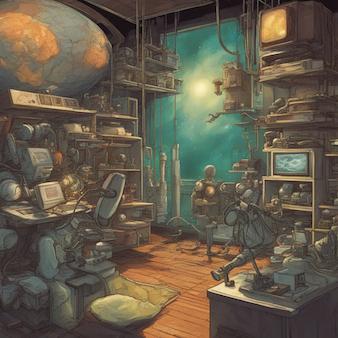Science fiction has always been a genre that pushes the boundaries of imagination and explores the limits of what is possible. One of the most exciting areas of science fiction is the exploration of space, which allows writers to create worlds and adventures that are beyond our current understanding of the universe. However, while space travel has been a staple of science fiction since the genre’s inception, it is only in recent years that a more realistic approach to space travel in science fiction has been taken. In this article, we will explore the challenges of creating realistic space travel in science fiction and how writers can overcome them.
Creating Space Travel in Science Fiction
The Challenge of Realistic Space Travel
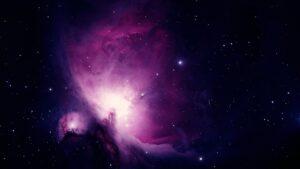
The biggest challenge of creating realistic space travel in science fiction is that our current understanding of the universe and the technology needed for interstellar travel is limited. While we have made significant advances in space exploration in recent years, including landing probes on Mars and sending a spacecraft beyond the edge of our solar system, we are still a long way from being able to travel between stars. This means that science fiction writers must take a creative approach to space travel, drawing on current scientific knowledge to create plausible technologies and scenarios that could one day become a reality.
One of the main challenges of creating realistic space travel in science fiction is the issue of propulsion. Our current methods of space propulsion, such as chemical rockets, are inefficient and can only take us so far. For interstellar travel, we would need a method of propulsion that is more efficient and can generate higher speeds. One possible solution is the use of nuclear propulsion, which has been studied by NASA and other space agencies. Nuclear propulsion uses the energy from nuclear reactions to propel a spacecraft, which would allow it to achieve much higher speeds than a chemical rocket.
Another challenge of creating realistic space travel in science fiction is the issue of time. Interstellar travel would take years, if not decades, and would require a spacecraft capable of sustaining human life for long periods of time. This means that science fiction writers must consider the logistics of space travel, including how humans would eat, sleep, and stay healthy during a long space journey. One possible solution is the use of suspended animation, in which humans are placed in a state of hibernation for the duration of the journey.
Overcoming the Challenges
While the challenges of creating realistic space travel in science fiction may seem daunting, there are ways to overcome them. One of the most important things that science fiction writers can do is to stay up to date on current scientific research and advancements in space technology. This allows them to incorporate real-world scientific knowledge into their stories and create plausible scenarios for space travel.
Another way to overcome the challenges of creating realistic space travel in science fiction is to take a more character-driven approach. By focusing on the experiences and emotions of the characters on the space journey, writers can create a more engaging and relatable story that resonates with readers. This approach also allows writers to explore the psychological and emotional effects of long-term space travel, which can be just as important as the scientific and logistical aspects of space travel.
Finally, science fiction writers can take inspiration from real-world examples of space exploration and use them to inform their stories. For example, the recent successes of private space companies such as SpaceX and Blue Origin have opened up new possibilities for space travel that were once considered science fiction. By drawing on these real-world examples, science fiction writers can create stories that are not only scientifically accurate but also resonate with readers on a personal level.
Conclusion
Creating realistic space travel in science fiction is a challenging but rewarding endeavor. By drawing on current scientific knowledge, taking a character-driven approach, and using real-world examples of space exploration, science fiction writers can create stories that push the boundaries of the genre and explore the limits of what is possible. As we continue to make advancements in space technology, it is likely that our understanding of the universe and our ability to travel through it will continue to evolve. Science fiction has always been a way for us to imagine what the future might hold, and by creating realistic depictions of space travel, we can inspire the next generation of scientists and explorers to push the boundaries even further.
Creating realistic space travel in science fiction is a challenge that requires a combination of scientific knowledge, creative storytelling, and a willingness to push the boundaries of the genre. By taking a character-driven approach, staying up to date on current scientific research, and drawing on real-world examples of space exploration, science fiction writers can create stories that inspire and excite readers while also remaining scientifically accurate and plausible.
Keywords: science fiction, space travel, interstellar travel, propulsion, suspended animation, character-driven, scientific accuracy, real-world examples, current scientific research.
Check out our Novel Writing Workbooks
Check out Little Tree Food Forest for articles on food forests and homesteading.
Check out FoodieScapes for articles on growing, fermenting and preserving food
Check out StoryScapes.World for articles on writing.
Subscribe to our newsletter to get information delivered to your inbox on how to write a book, outlining your novel, keeping journals, marketing your novel, self-publishing, writing poetry and more.




